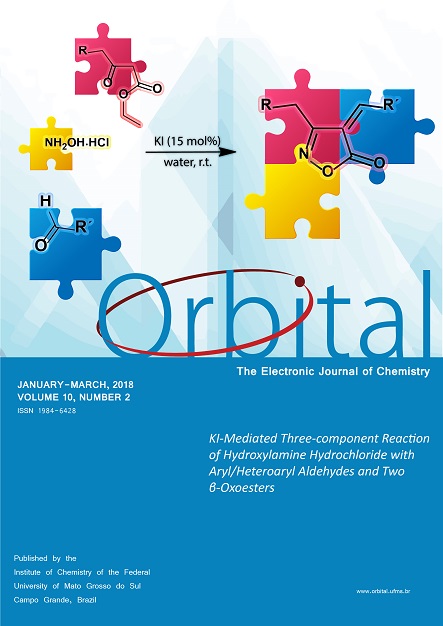- fenthion,
- boron-doped diamond electrode,
- square wave voltammetry,
- medicinal plants
Copyright (c) 2018 Orbital: The Electronic Journal of Chemistry

This work is licensed under a Creative Commons Attribution-NonCommercial-NoDerivatives 4.0 International License.
Abstract
In this work a direct, simple, fast and sensitive method to determine Fenthion was developed using a Boron-Doped Diamond Electrode and Square Wave Voltammetry. The method was applied into Passiflora alata herbal medicinal tinctures derivate from passion fruits. None previous treatment such as derivation or pre-concentration of the analyte was done. Cyclic Voltammetry results showed well defined irreversible oxidation peaks at around 1.27 V into the pH range of 2.0 to 8.0. Square Wave Voltammetry was used to analytical determination and the analysis parameters, such as frequency, amplitude and pH from support electrolyte were optimized. A calibration curve was obtained, and it was observed a sensitivity of 0.38 A/mol L-1 and linearity of 0.995. The limits of detection and quantification were 8.0x10-8 mol L-1 (21 mg L-1) and 2.5x10-7 mol L-1 (70 mg L-1), respectively. Recovery studies were applied using Passiflora alata samples fortified with Fenthion in concentrations of 2.5 µmol L-1and 4.0 µmol L-1, followed by the standard addition of the pesticide aliquots. It was observed that the complex matrix does not interferes in the method. The recovery results were about 98.4 and 112.0%, reinforcing that the method is suitable to determine the analyte in target complexes samples, such as Herbal Medicinal Plants.


